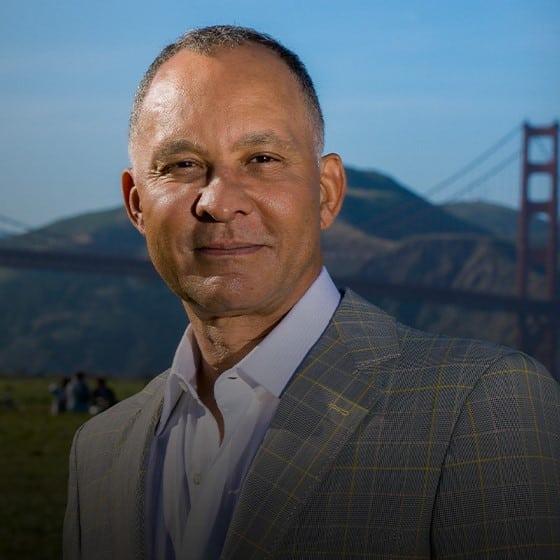Gynecomastia After Semaglutide? Top Surgical Fixes for Men’s Chest Fat Loss & Loose Skin
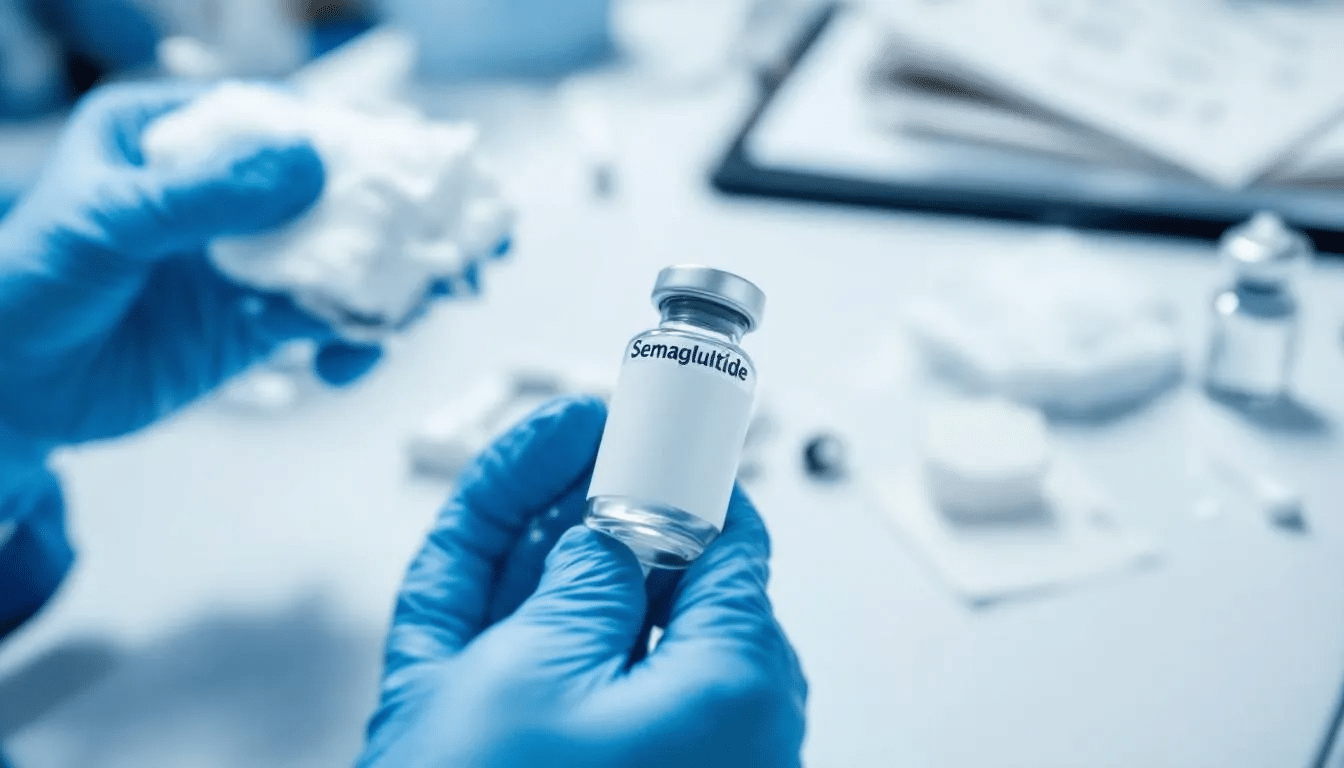
Men experiencing chest fat loss and skin laxity after using semaglutide might wonder why this is happening and how to fix it. This article explores the causes, including the development or worsening of gynecomastia, a condition marked by enlarged breast tissue—also called gynecomastia, or male breast enlargement—and offers practical solutions to help you restore a firmer, more masculine chest.
Key Takeaways
- Semaglutide aids in significant weight loss but may lead to gynecomastia and skin laxity in men, necessitating surgical interventions for a more masculine chest appearance.
- Post-weight loss skin laxity can be addressed through body contouring procedures, which enhance physical comfort and improve body image. It may include surgeries on areas such as the chest, abdomen, and thighs.
- Gynecomastia surgery, which may include liposuction and direct excision techniques, plays a vital role for men aiming to eliminate excess breast tissue and boost self-confidence, with thorough post-operative care being key to successful recovery and lasting results.
How Semaglutide Leads to Unexpected Chest Changes in Men

Semaglutide, known by brand names such as Ozempic and Wegovy, has rapidly become a cornerstone in the management of type 2 diabetes and as a powerful aid in weight loss. By mimicking a natural hormone that regulates blood sugar and appetite, semaglutide helps individuals reduce calorie intake and achieve significant weight loss. For many men in San Francisco and beyond, this medication has been transformative, supporting their weight loss journey and improving overall health.
However, while semaglutide is highly effective in reducing body fat and lowering body weight, it can also highlight specific challenges, particularly for men. As substantial weight loss occurs, some men notice the development or worsening of gynecomastia, a condition marked by enlarged breast tissue. This phenomenon, sometimes referred to as “Ozempic chest,” can be distressing, as it often reveals excess breast tissue and skin laxity previously masked by higher body fat levels.
Addressing these changes requires more than just continued weight loss. While semaglutide and other weight loss medications are excellent for shedding pounds, they do not specifically target glandular tissue, which is often responsible for persistent male breast enlargement. Despite the reduction in body fat from semaglutide, the specific glandular tissue associated with gynecomastia remains unaffected. As a result, even after achieving a stable weight, many men are left with excess tissue, loose skin, and a chest shape that does not reflect their hard-earned progress.
This is where body contouring procedures and plastic surgery come into play. Plastic surgeons like Dr. Miguel Delgado specialize in gynecomastia treatment and male breast reduction, offering comprehensive solutions for men seeking a more masculine chest. These surgical procedures are designed to remove excess breast tissue, tighten loose skin, and restore a firmer, more contoured chest appearance, ultimately leading to improved body image and self-esteem.
Before undergoing gynecomastia surgery or any body contouring procedure, it’s essential to have realistic expectations and understand the potential complications, such as impaired gastric emptying or issues related to healing. Preparation is key: patients are often advised to stop weight loss medications like semaglutide before surgery to ensure optimal healing and reduce surgical risks. Post-operative care, including maintaining a healthy lifestyle and managing any remaining loose skin, is crucial for achieving the best possible results and sustaining them over time.
In summary, while semaglutide offers a highly effective path to significant weight loss, it can also reveal or worsen gynecomastia and skin laxity in men. Plastic surgery, particularly gynecomastia surgery, provides a comprehensive solution for addressing these concerns, helping men in San Francisco and beyond achieve a more masculine chest and enhanced self-esteem. Consulting with an experienced plastic surgeon is the first step toward addressing both the physical and emotional impacts of male breast enlargement, and achieving lasting improvements in body contour and confidence.
The Link Between Semaglutide and Gynecomastia
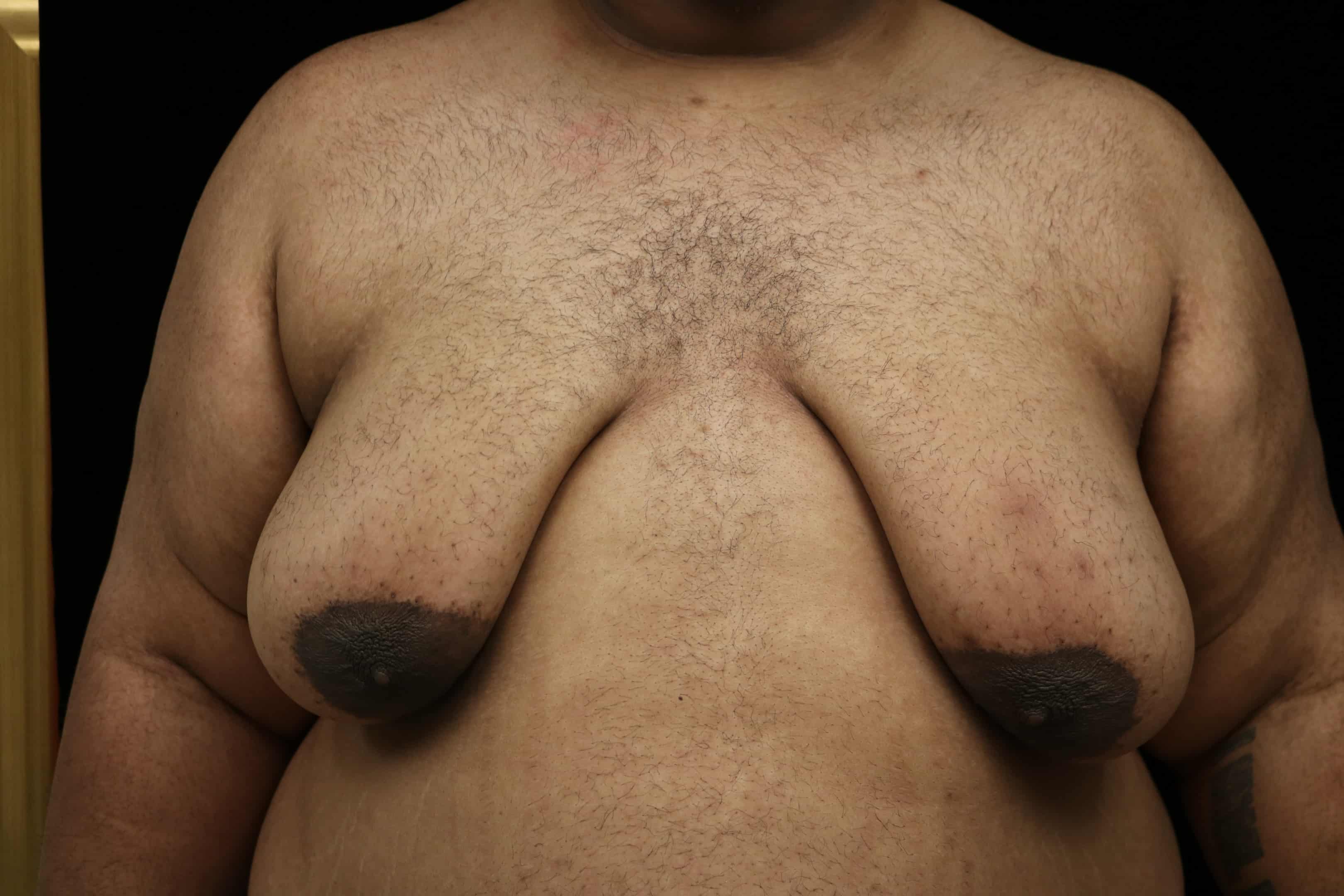
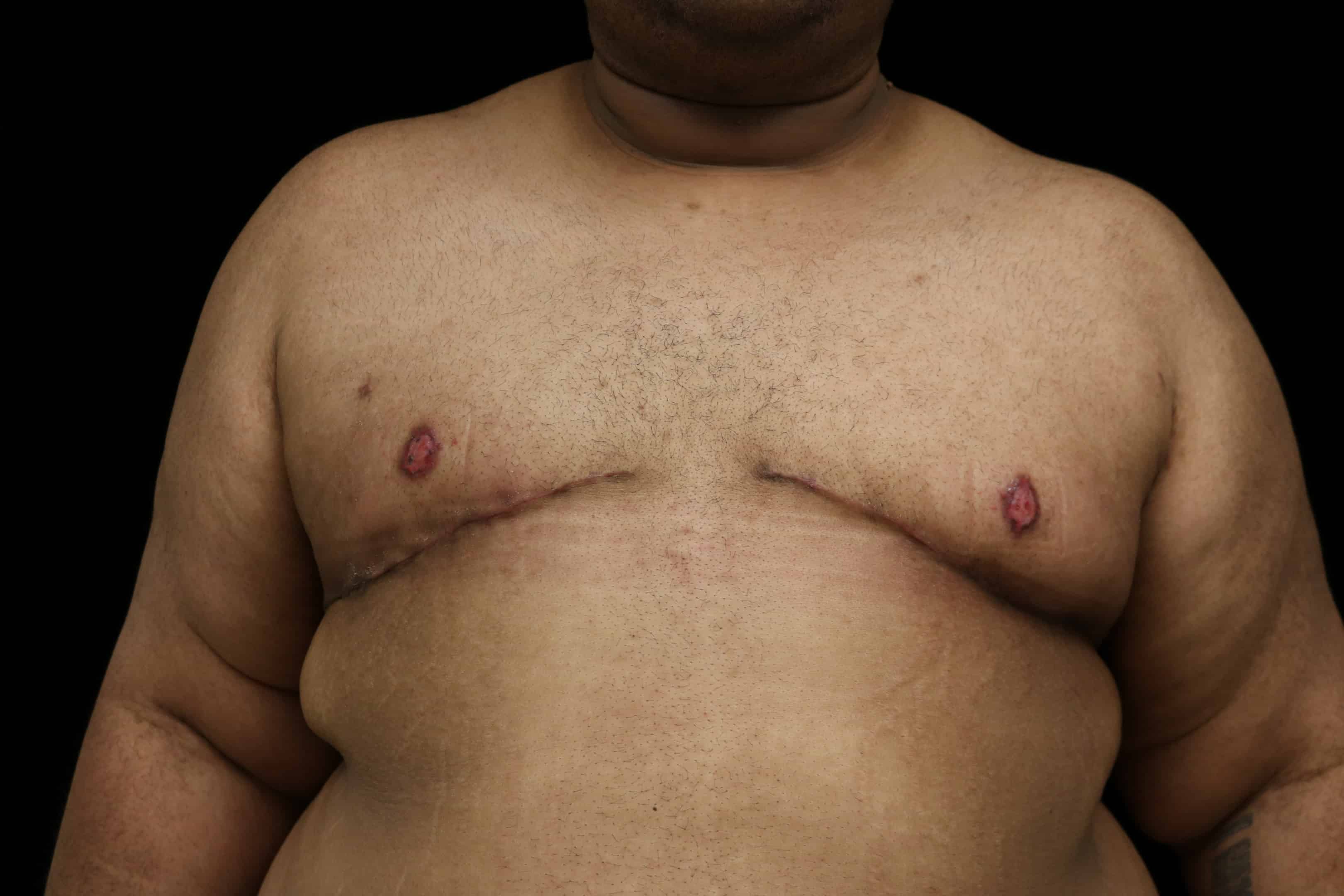
Semaglutide, primarily used for weight loss and managing type 2 diabetes, works by altering hormone levels and suppressing appetite, helping men shed pounds effectively. This reduction in body weight is primarily due to the loss of body fat, but may not address all types of chest tissue, such as glandular tissue associated with gynecomastia.
However, despite significant weight loss, many men may still struggle with stubborn chest fat and skin laxity due to the rapid loss of fat. Semaglutide primarily targets body fat, resulting in reductions in body weight and alterations in body composition.
This often results in a chest that appears less masculine, making additional treatments necessary to achieve the desired body contour.
How Semaglutide Alters Fat and Hormone Balance
Semaglutide, an injectable GLP-1 agonist marketed under the brand name Ozempic, has proven to be a powerful tool in the weight loss journey. It works by mimicking a hormone that regulates hunger in the brain, significantly suppressing appetite and reducing calorie intake. This leads to substantial weight loss, but the rapid shedding of pounds can sometimes lead to imbalances, contributing to conditions like gynecomastia in men due to altered hormone levels.
While Semaglutide helps achieve massive weight loss and reach one’s target weight, it does not address all aspects of losing weight. Men may experience persistent fat accumulation in specific areas, such as the chest, which can be frustrating, especially when trying to lose weight.
Unlike other weight loss medications, Semaglutide’s impact on hormone levels can exacerbate gynecomastia, making male breast reduction necessary for those seeking a more masculine chest.
Why Chest Fat Loss Doesn’t Mean Glandular Reduction
One of the more challenging aspects of weight loss with Semaglutide is the impact on male breast tissue. Significant weight loss can reveal gynecomastia, a condition characterized by male breast enlargement due to an imbalance of hormone levels. Gynecomastia affects 35% of the male population, causing emotional discomfort and self-consciousness. Despite reaching their weight loss goals, many men find that the visibility of gynecomastia becomes more pronounced, leading to enlarged breast tissue that is difficult to reduce without surgical intervention.
Rapid weight loss often leaves residual loose skin and persistent fatty deposits in the chest area, making gynecomastia more noticeable and hard to address through non-surgical means. To achieve a more masculine chest and reduce the appearance of male breasts, many men consider gynecomastia treatment, which involves procedures like gynecomastia surgery and male breast reduction to remove excess tissue and contour the chest.
Common Signs of “Ozempic Chest” in Men
Hormone levels play a crucial role in shaping the male chest, particularly in conditions such as gynecomastia. Gynecomastia is the enlargement of male breast tissue, often resulting from an imbalance between the female sex hormone estrogen and the male hormone testosterone levels. While testosterone inhibits the growth of male breast tissue, estrogen can stimulate it, even in small amounts. When this delicate balance tips in favor of estrogen, men may notice the development of excess breast tissue and a less masculine chest contour.
Several factors can contribute to this hormonal imbalance, including weight gain, certain medications, and underlying health conditions. In San Francisco, men seeking a more masculine chest often turn to plastic surgeons who specialize in gynecomastia treatment. These experts understand the complex interplay of hormones and can offer tailored solutions to help restore a firmer, more masculine chest appearance.
How Hormones Influence Chest Fat and Gynecomastia
Hormones play a direct role in the accumulation of chest fat and the development of gynecomastia. Estrogen encourages the growth of breast tissue, while testosterone keeps it in check. When men experience weight gain, the body’s fat cells can convert more testosterone into estrogen, further tipping the hormonal balance and promoting the growth of excess breast tissue. This can lead to a softer chest shape and the appearance of gynecomastia, also known as male breasts.
Losing weight and maintaining a stable weight can help reduce the risk of developing gynecomastia, as it limits the amount of fat available to convert into estrogen. However, even after significant weight loss, some men may still struggle with persistent chest fat or excess breast tissue. In these cases, surgical intervention may be necessary to remove the remaining tissue and achieve a more masculine chest contour.
Assessing Hormonal Imbalances
A thorough assessment of hormonal imbalances is a critical step in diagnosing and treating gynecomastia. This process typically involves a detailed medical history, physical examination, and blood tests to evaluate hormone levels. Identifying the root cause of gynecomastia allows for a more targeted and effective treatment plan.
In some situations, hormone therapy may be recommended to restore balance and reduce the growth of breast tissue. However, surgical treatment remains the most effective option for many men, especially those with significant or persistent gynecomastia. Plastic surgeons in the San Francisco Bay Area specializing in gynecomastia treatment can guide patients through the assessment process and develop a personalized approach to help them achieve a more masculine chest and enhanced self-confidence.
Understanding Skin Laxity After Weight Loss
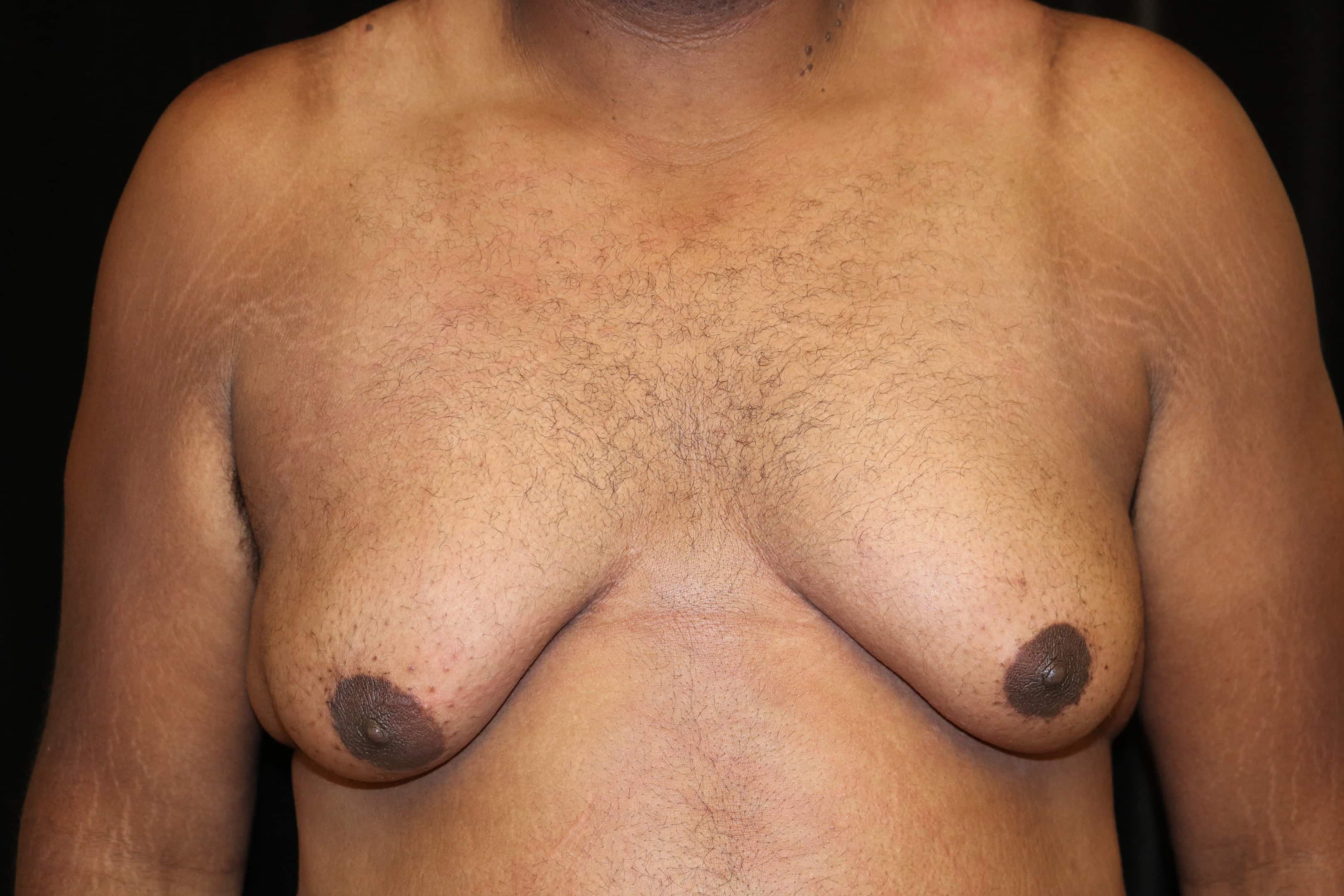
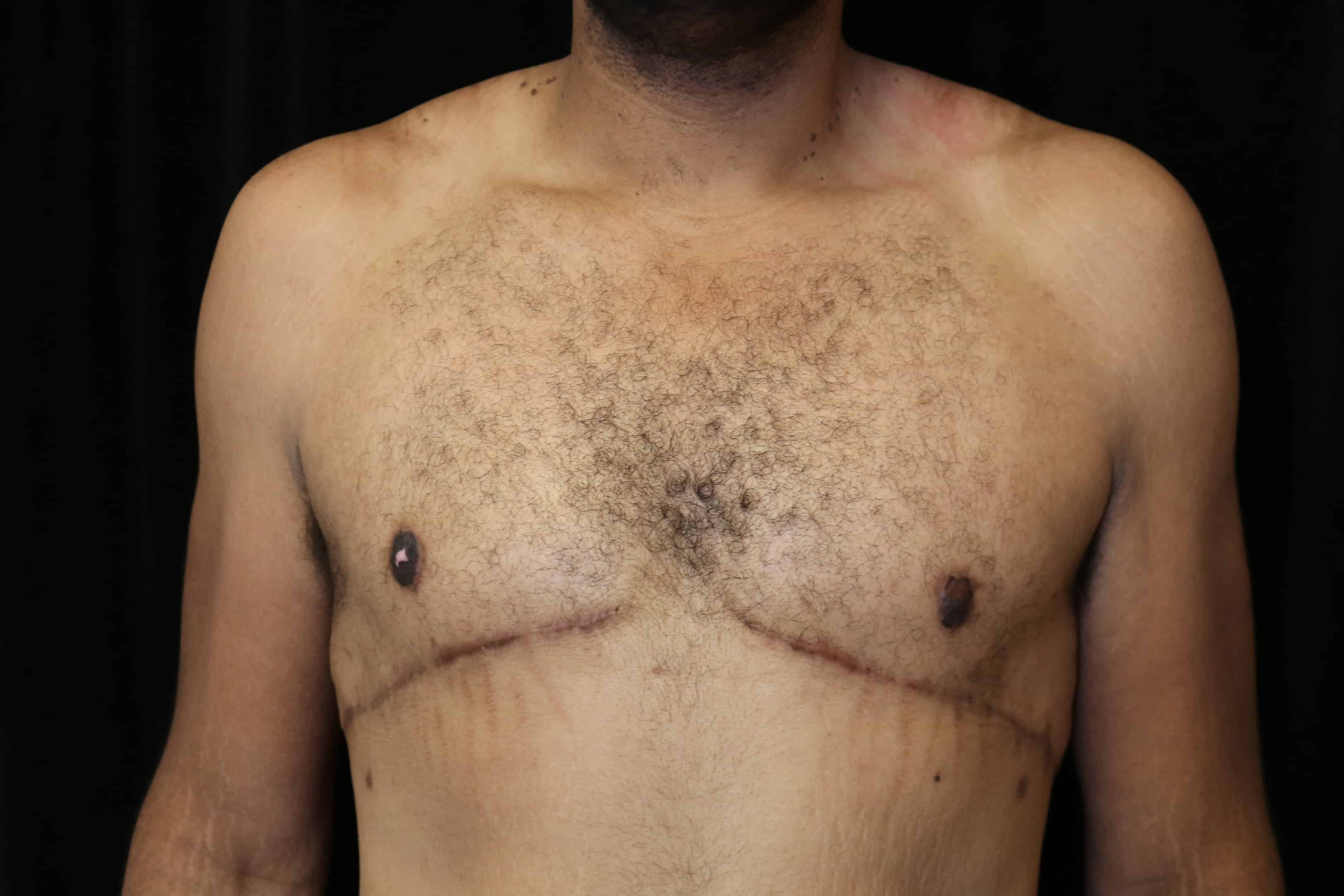
After significant weight loss, skin laxity becomes a common issue, as the skin loses its elasticity, resulting in sagging. This can create creases and folds that negatively affect the body contour. Addressing skin laxity through body contouring procedures can significantly improve self-esteem and body image by eliminating the excess skin that remains after weight loss.
Some body contouring procedures, such as abdominoplasty, specifically address the abdominal wall by tightening and reassembling its muscles to improve core strength and abdominal aesthetics.
While Semaglutide is effective in weight loss, it does not reduce the glandular tissue responsible for gynecomastia, which is why surgical solutions are often necessary.
Areas Most Affected in Men
Skin laxity is most evident in areas such as the abdomen, thighs, and upper arms after weight loss. For men, substantial weight loss can lead to significant concerns about redundant skin, not just in these areas, but also in the chest, which is commonly affected by sagging skin. This excess skin can be uncomfortable and unsightly, creating both physical and psychological challenges.
Addressing skin laxity in these common areas often involves surgical procedures that remove the excess skin and tighten the underlying tissues. This not only improves the appearance, but also enhances physical comfort and mobility. Specific methods for these areas will be discussed in further detail, providing a comprehensive solution to post-weight loss skin laxity.
When Surgery Is the Best Option
Body contouring procedures are popular among men who have undergone significant weight loss and seek to address sagging skin. Common post-weight loss surgeries include weight loss surgery:
- Sculpting and lifting the chest
- Sculpting and lifting the arms
- Sculpting and lifting the abdomen
- Sculpting and lifting the thighs. These procedures significantly improve body contour and self-esteem. Examples of these surgeries include tummy tucks and thigh lifts.
Different types of body lifts include:
- Arm lift: aims to lift and tighten the arms by removing excess skin and fat, with incisions typically made in the armpit and extending down the inner arm.
- Lower body lift (also known as Belt Lipectomy or Circumferential Abdominoplasty): contours the abdomen, hips, and thighs, often requiring a hospital stay of 1-2 nights post-surgery.
- Medial thigh lift: focuses on removing excess skin and fat to create smoother, lifted inner thigh skin.
These surgical techniques are tailored to each individual’s needs, ensuring the best possible outcomes for addressing skin laxity. By eliminating excess skin and tightening the underlying tissues, these procedures help men achieve a more toned and masculine appearance, enhancing both physical comfort and self-confidence through skin tucks.
Surgical Solutions for a More Masculine Chest
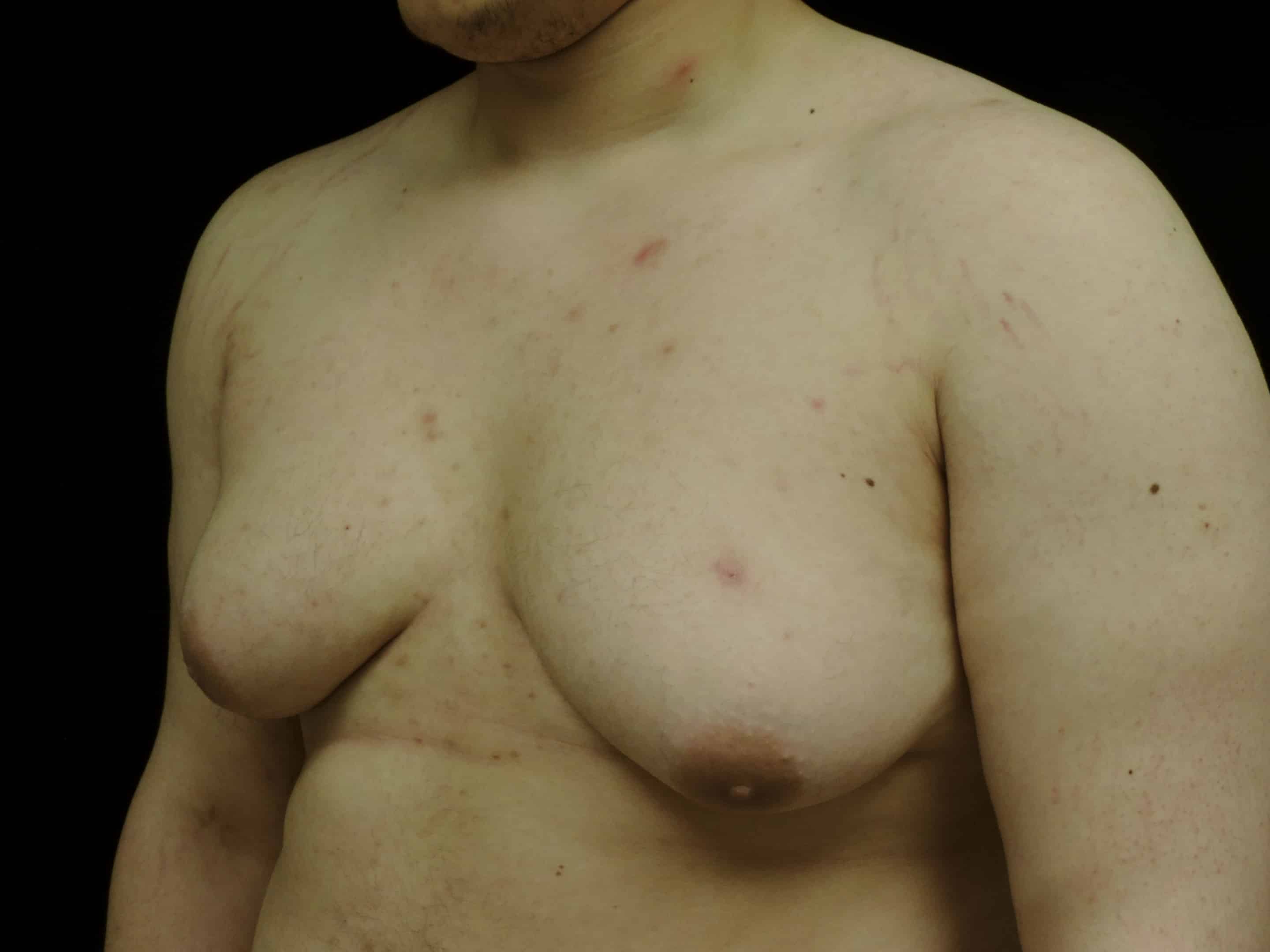
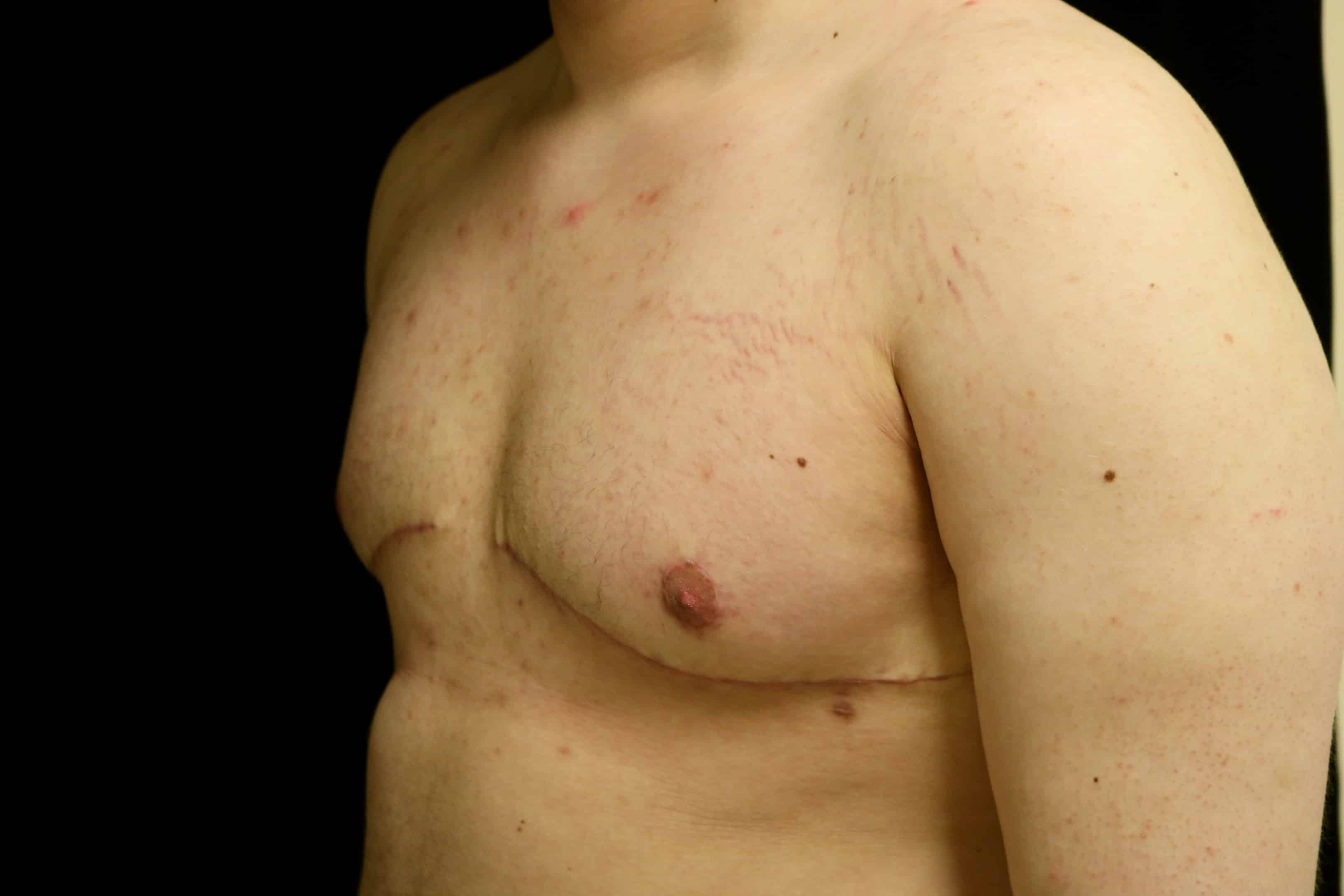
Gynecomastia surgery is a crucial procedure for men to eliminate excess breast tissue, known as gynecomastia, and achieve a firmer, more masculine chest. This surgery not only improves body image and physical appearance but also significantly boosts self-esteem and mental well-being. Most patients experience a smooth recovery and report significant improvements in their chest appearance and well-being following gynecomastia surgery.
Removing excess breast tissue and using techniques like liposuction and gynecomastia surgery provides a comprehensive solution for attaining a more defined and masculine chest.
Liposuction vs. Direct Excision: What You Need to Know
Liposuction is a key component of gynecomastia surgery, enhancing chest definition by removing excess fat from the chest area. The process involves inserting a small tube called a cannula to vacuum out the fat, effectively contouring the chest.
Combining liposuction with other surgical techniques effectively addresses both fatty deposits and glandular tissue, offering a more complete solution for achieving a masculine chest.
Double Incision Mastectomy With Nipple Graft
Direct excision procedures specifically target and remove glandular breast tissue, which is often the underlying cause of gynecomastia. This surgical method is crucial for men with excess glandular tissue that cannot be addressed through liposuction alone. By removing this tissue, direct excision helps achieve a flatter and more masculine chest appearance.
Combining Skin Tightening With Gynecomastia Surgery

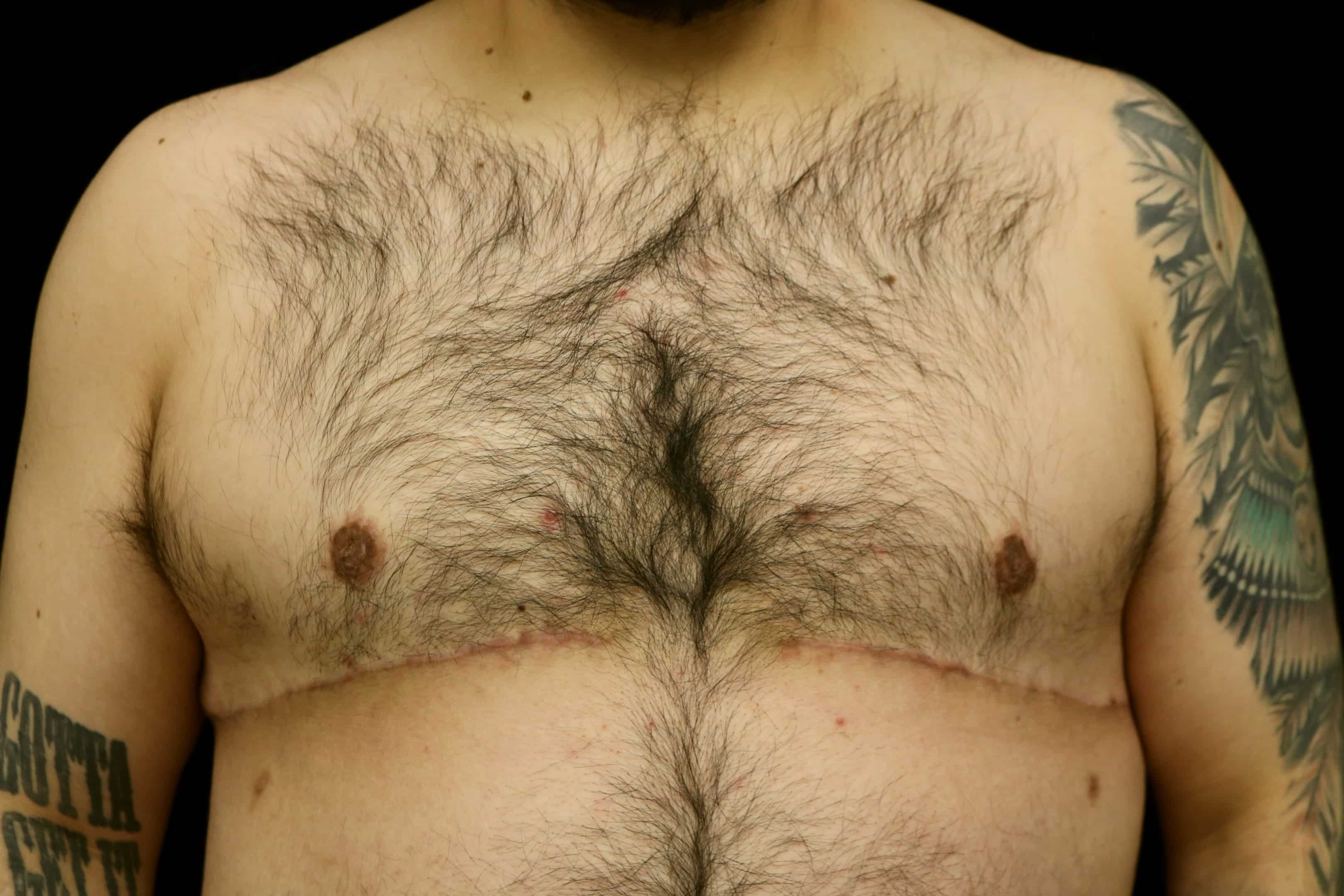
Combining liposuction, breast gland removal, and direct skin excision provides a more comprehensive solution for men undergoing gynecomastia surgery. While liposuction effectively removes fat, it typically does not address excess skin and stretch marks, which are common issues that often occur after significant weight loss. By combining these techniques, surgeons can effectively treat different types of tissue, resulting in improved chest contour and higher patient satisfaction.
This combined approach ensures a more thorough and effective treatment, resulting in improved health and greater satisfaction. Men who undergo these combined procedures, including double incision mastectomy with a free nipple graft, often experience significant improvements in their chest shape and mental well-being, strengthening the benefits of a comprehensive surgical solution.
Preparing for Gynecomastia Surgery
Preparation for gynecomastia surgery is crucial for optimal outcomes. Good candidates for the surgery are healthy individuals who:
- Have maintained a stable weight for 6-12 months after significant weight loss
- Have maintained a stable weight for at least one year
- Have obtained medical clearance from a Primary Care Physician
These steps are essential before pursuing body contouring surgery.
Additionally, patients must refrain from smoking to enhance healing and minimize complications.
Pre-Surgery Guidelines for Better Results
Pre-surgery preparation involves several essential steps to ensure a smooth surgical procedure and recovery:
- Patients must disclose their current medications, including GLP-1 agonists like Semaglutide, which should be stopped before surgery to avoid complications related to impaired gastric emptying.
- Avoid alcohol consumption at least one week before surgery.
- Reduce strenuous exercise in the weeks leading up to the procedure to minimize risks.
Liposuction should be performed only after the patient has achieved and stabilized their optimal weight for at least a year. These guidelines aim to optimize the patient’s health and preparedness for surgery, minimize the risk of potential complications, and promote a smoother recovery process.
Collaboration with Healthcare Providers
Effective collaboration with healthcare providers is crucial during the preparation phase for gynecomastia surgery. Medical history, personal feelings about body image, and reasons for surgery are key factors discussed during consultations for post-weight-loss body contouring surgery. Patients should understand the specific measures related to Semaglutide use and communicate any concerns to their healthcare team to ensure they are prepared for surgery.
Dr. Delgado’s office offers personalized care and comprehensive evaluations, ensuring that patients receive the best possible guidance and tailored treatment plans. As a certified plastic surgeon and member of the American Board of Plastic Surgery and the American Society of Plastic Surgery, Dr. Delgado’s expertise and personalized approach contribute significantly to the success of gynecomastia surgeries, which is a procedure often performed by plastic surgeons.
Understanding Risks and Complications
Before undergoing gynecomastia surgery, it’s important to be aware of the potential risks and complications associated with the procedure. While gynecomastia surgery is generally considered safe, as with any surgical procedure, there are inherent risks that should be discussed with a qualified plastic surgeon. Choosing an experienced plastic surgeon in San Francisco can help minimize these risks and ensure the best possible outcomes.
Potential Surgical Risks
Some potential risks associated with gynecomastia surgery include infection, bleeding, and scarring. Infection can develop if the surgical site is not properly cared for, while bleeding may occur if blood vessels are not adequately sealed during the procedure. Scarring is another consideration, as incisions made during surgery can leave visible marks. However, skilled plastic surgeons strive to place incisions in less noticeable areas and use advanced techniques to minimize scarring.
It’s essential to follow all post-operative care instructions and attend follow-up appointments to reduce the risk of complications and support optimal healing. Open communication with your plastic surgeon in San Francisco will help you understand what to expect and how to care for your body after surgery. By being informed and proactive, you can achieve a more masculine chest, enhance your body image, and boost your self-esteem while minimizing the likelihood of complications.
Recovery & Long-Term Results
Recovery from gynecomastia surgery requires careful adherence to post-operative care instructions for optimal healing. Patients typically experience temporary physical discomfort and swelling, which can be managed with prescribed medications. The recovery period after gynecomastia surgery typically ranges from two to six weeks, with full results visible after six months or more.
It’s essential to be aware of the higher risk of wound healing issues, infections, and seroma formation, especially for those who have undergone massive weight loss.
Post-Operative Care Instructions

Post-operative care is essential for a smooth recovery after gynecomastia surgery. Following the surgeon’s specific instructions on wound care, including proper incision care, is crucial for optimizing recovery and preventing complications. Adhering to prescribed care guidelines not only facilitates healing but also ensures the best possible outcomes from the surgery.
Having a strong support system is also vital for emotional well-being during the recovery period. A supportive environment can enhance recovery and bolster emotional resilience, helping patients navigate the post-surgery period with greater ease and confidence.
Maintaining Results With Lifestyle Changes
Achieving long-term success after gynecomastia surgery relies heavily on maintaining a healthy diet and adhering to a consistent exercise regimen. These lifestyle changes are essential for preserving the results of the surgery and preventing weight gain, which can lead to a recurrence of gynecomastia.
Patients should also have realistic expectations and understand that the healing process is gradual and time-consuming. Regular exercise and balanced nutrition contribute significantly to overall health and well-being, ensuring that the benefits of the surgery are sustained in the long term.
Boosting Self-Esteem Through Chest Contouring

Body contouring procedures do more than enhance physical appearance; they also significantly improve self-esteem and mental health. Men who have struggled with gynecomastia often face psychological issues like low self-esteem and embarrassment.
In addition to chest and body contouring, some men may also consider neck enhancements to improve skin laxity further and achieve a more balanced, rejuvenated appearance.
By addressing these physical concerns through surgeries like gynecomastia treatment, men can achieve a more masculine chest, which significantly enhances their sense of self-worth and confidence. Experiencing a boost in self-image from gynecomastia treatment can positively influence personal relationships and career pursuits.
Mental Health and Confidence Benefits

Achieving a more masculine chest can lead to greater social engagement and improved personal confidence. Men often feel more empowered to participate in social and romantic situations, experiencing a sense of liberation and reduced anxiety after body contouring procedures. Surgery for gynecomastia provides men with renewed freedom in their clothing choices and activities. This improved body image can lead to more active and fulfilling social lives, strengthening the psychological benefits of a flatter chest contour.
Additionally, the psychological boost from achieving a more masculine chest goes beyond social interactions. It positively impacts mental health, reducing feelings of dissatisfaction and emotional turmoil that often accompany gynecomastia. The emotional crisis from persistent gynecomastia can leave men feeling their weight loss journey is incomplete. This transformation contributes to a more confident and happier life, underscoring the importance of addressing physical concerns for mental well-being.
The Psychological Impact of Gynecomastia Resolution
It is essential to recognize that the healing process requires time. This understanding helps maintain realistic expectations following surgery. Liposuction enhances chest contour and definition, helping to achieve a more masculine appearance, but it’s essential to recognize that the final results may take several months to become fully apparent. Regular exercise and balanced nutrition are crucial lifestyle changes that support the long-term success of gynecomastia surgery.
Support systems play a significant role in the recovery process. Maintaining a consistent weight is vital to prevent weight gain and maintain the results after gynecomastia surgery. A strong support network can provide emotional and practical assistance, enriching overall well-being and personal confidence.
Setting realistic expectations and having a robust support system enables men to fully benefit from their surgical procedures and lead healthier, more confident lives.
Why Choose Dr. Miguel Delgado?
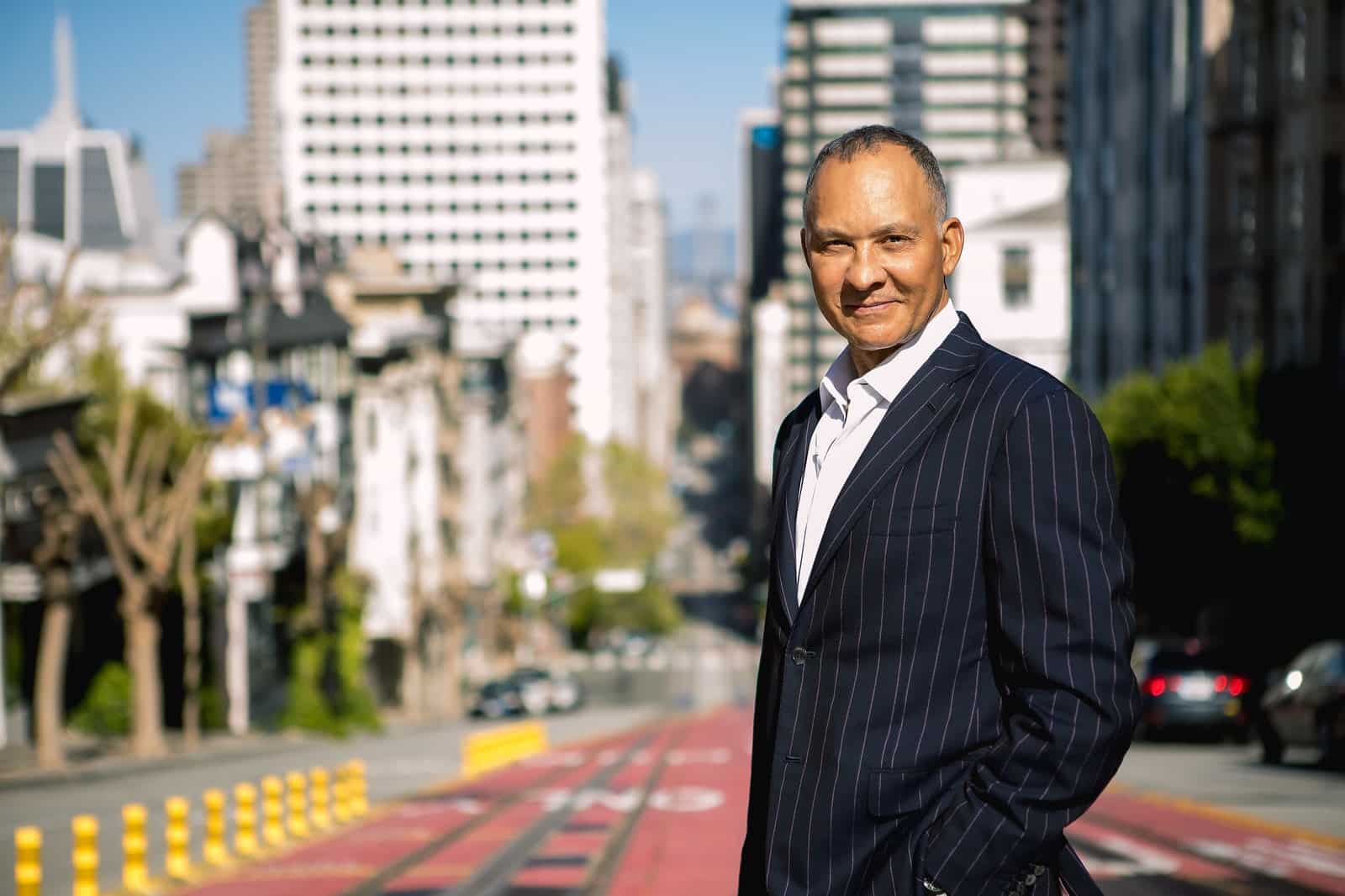
Dr. Miguel Delgado is recognized as one of San Francisco’s leading experts in gynecomastia and body contouring procedures. As one of San Francisco’s most respected plastic surgeons, Dr. Delgado is renowned for his commitment to excellence and deep involvement in the local community. His extensive experience and personalized approach have made him a leading figure in the field, helping countless men achieve their desired body image and regain their confidence.
His dedication to patient care and advanced surgical techniques ensures optimal outcomes for those seeking treatment for gynecomastia.
30+ Years of Gynecomastia Expertise
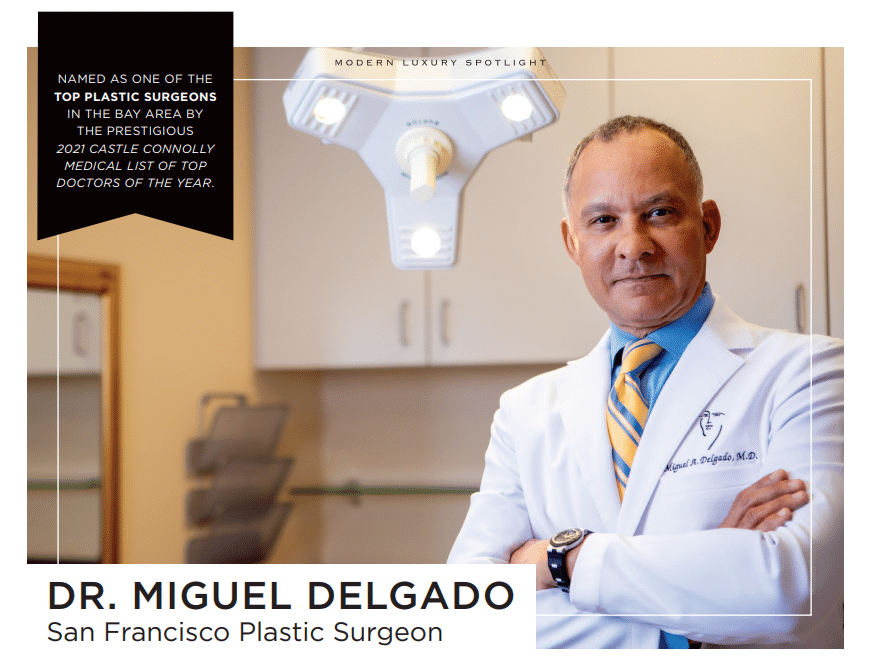
With over 30 years of experience in plastic surgery, Dr. Miguel Delgado has completed more than 5,000 gynecomastia procedures. His expertise extends beyond surgical skills, as he also serves as the Medical Director for gynecomastia.org, contributing valuable knowledge and support to the gynecomastia community. Dr. Delgado’s commitment to achieving optimal outcomes for his patients is evident in his meticulous approach to each case, making him a leading expert in gynecomastia surgery.
Dr. Delgado’s extensive experience ensures that patients receive the highest standard of care. His thorough understanding of gynecomastia and body contouring procedures allows him to tailor treatments to each individual’s unique needs, resulting in improved body image and self-esteem. Patients can trust in his expertise to guide them through their transformation journey with confidence and care.
Personalized Treatment Plans in San Francisco
Dr. Delgado emphasizes a patient-focused approach, ensuring that each treatment plan is tailored to the patient’s specific needs and health conditions. These customized treatment plans take into account individual goals, concerns, and desired results, effectively addressing the particular challenges faced by men who experience chest fat loss and skin laxity following weight loss.
This approach significantly enhances the healing process and satisfaction, providing a comprehensive solution to achieving a more masculine chest.
Summary
Addressing chest fat loss and skin laxity after using Semaglutide involves understanding the effects of the medication, considering surgical solutions like gynecomastia surgery, and preparing both physically and mentally for the transformation. Dr. Miguel Delgado’s expertise in gynecomastia and body contouring provides a reliable path to achieving a more masculine chest and enhancing self-esteem.
The journey toward a more confident and empowered self is achievable. By adhering to the guidelines, working closely with healthcare professionals, and keeping realistic expectations, men can experience meaningful improvements in their body image and mental well-being. Embrace this transformation and take the first step toward a healthier, happier version of yourself.
Call Dr. Delgado today
If you are struggling with the effects of chest fat loss and skin laxity after using semaglutide, or if gynecomastia has become a concern following your weight loss journey, Dr. Miguel Delgado is here to help. With his extensive experience and compassionate approach, Dr. Delgado provides personalized consultations to assess your specific condition and discuss the most suitable treatment options tailored to your individual needs.
Scheduling a consultation with Dr. Delgado is the first step toward reclaiming a firmer, more masculine chest and improving your body image. During your appointment, you will receive a thorough assessment, including an evaluation of your chest tissue, skin laxity, and overall health status. Dr. Delgado will also explain the surgical techniques available, such as liposuction, direct excision, or combined procedures, and guide you through the preparation and recovery process.
Located in the San Francisco Bay Area, Dr. Delgado’s practice serves men from across the region, including those in Pacific Heights and surrounding neighborhoods. His reputation as a leading plastic surgeon specializing in gynecomastia surgery and body contouring procedures makes him a trusted choice for men seeking effective and lasting results.
Don’t let gynecomastia or loose skin undermine the success of your weight loss efforts. Contact Dr. Delgado’s office today to schedule your consultation and take the next step toward a more confident, comfortable, and masculine chest. Call for a personal consultation at 415-898-4161 or a virtual consultation.
Travel Patients: Places of Interest in the San Francisco Bay Area
The San Francisco Bay Area is not only a hub for advanced medical care, but also a vibrant region filled with numerous attractions that travel patients can enjoy during their visit. Men coming for gynecomastia surgery or other body contouring procedures often take advantage of their time in this beautiful area to explore its rich culture, scenic views, and iconic landmarks.
Some popular destinations include:
- Golden Gate Bridge: An iconic symbol of San Francisco, perfect for sightseeing and photography.
- Fisherman’s Wharf: A bustling waterfront area with shops, restaurants, and entertainment.
- Alcatraz Island: The historic former prison that offers guided tours and stunning views of the bay.
- Union Square is known for its shopping, dining, and vibrant urban atmosphere.
- Pacific Heights: A picturesque neighborhood with stunning Victorian homes and panoramic city views.
- Golden Gate Park: A vast green space featuring gardens, museums, and recreational areas.
- Muir Woods National Monument: Just a short drive away, this serene forest is home to ancient coastal redwoods.
Patients can combine their medical journey with leisure activities, making their recovery period more pleasant and less stressful. Many local accommodations cater specifically to medical visitors, offering comfortable stays close to surgical centers. Whether it’s enjoying a leisurely walk along the Embarcadero or sampling local cuisine, the San Francisco Bay Area provides a welcoming environment for those seeking both healing and exploration.
Frequently Asked Questions
Can exercise alone reduce gynecomastia?
Exercise may help reduce chest fat associated with gynecomastia, but it does not address the underlying glandular tissue. Therefore, surgical intervention is typically required for a complete resolution of the condition.
What is the recovery time for gynecomastia surgery?
The recovery time for gynecomastia surgery typically allows patients to resume normal activities within a week. However, complete recovery may vary depending on adherence to post-operative care. It’s essential to follow your surgeon’s instructions for optimal healing.
Will there be scarring after gynecomastia surgery?
Scarring after gynecomastia surgery is typically minimal, particularly when incisions are placed in natural skin folds. Overall, the outcome generally results in discreet scars.
Can gynecomastia recur after surgery?
Yes, gynecomastia can recur after surgery due to factors such as weight gain or hormonal changes, but maintaining a healthy lifestyle may help mitigate this risk.
How does gynecomastia surgery impact self-esteem?
Gynecomastia surgery significantly boosts self-esteem, improves body image, and enhances confidence. Individuals often report a positive change in their self-perception following the procedure.
